I did not intend to accumulate the numbers of hydrangeas (or azaleas) in the garden today, but trialing one, then another became a small, but favored collection that belies my stated preference for treasures less common. Yes, the lovely blooms in June come shortly after the garden’s peak, so a void is filled. My son, visiting for the first time in months, and my wife (cooped up at home for three months and counting) both commented today on the large flowers, and thankfully there are plentiful blooms after recent years when these were only a scattered few. With damage in mild and cold winters, and from ill timed freezes, rather than just sit back and enjoy, I’ve had little alternative but to compare the damage between one variety and another. Thankfully, not this year.
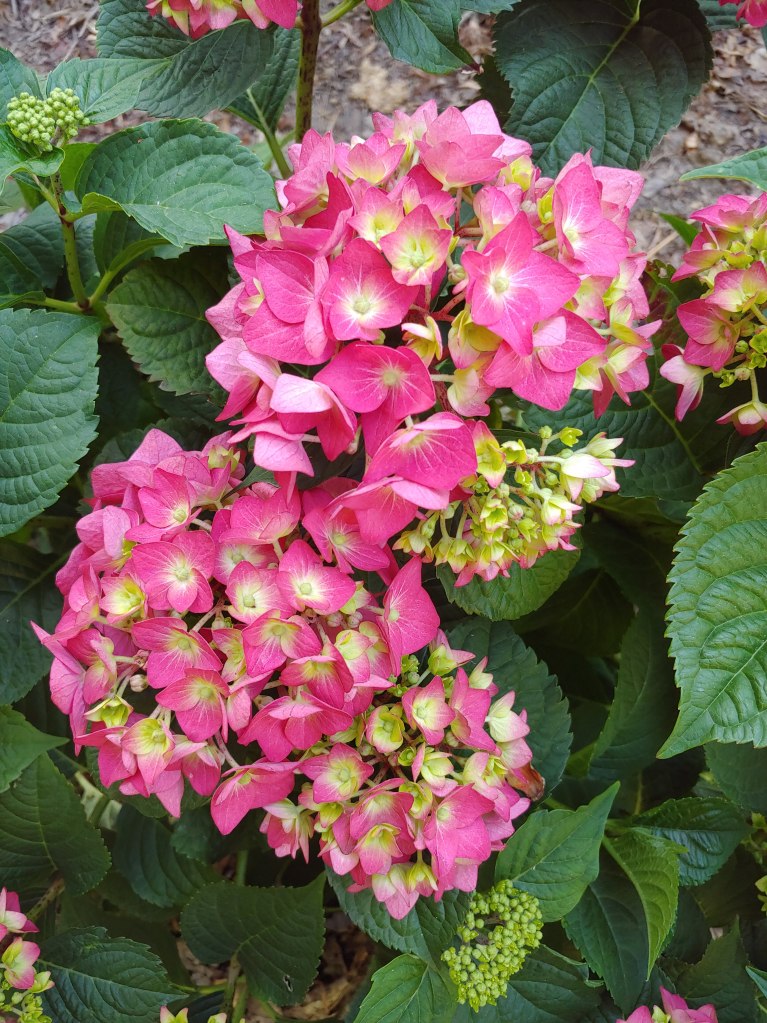
One thing is certain, the woody branches of Oakleaf (Hydrangea quercifolia, below) and panicled hydrangeas (Hydrangea paniculata) do not suffer from the cold, or from late freezes after warm spring temperatures have started early growth. Lacecap (Hydrangea macrophylla) and Mountain hydrangeas (Hydrangea serrata) suffered slight damage in two mid-May freezes, but both will flower with only a few leaves damaged.
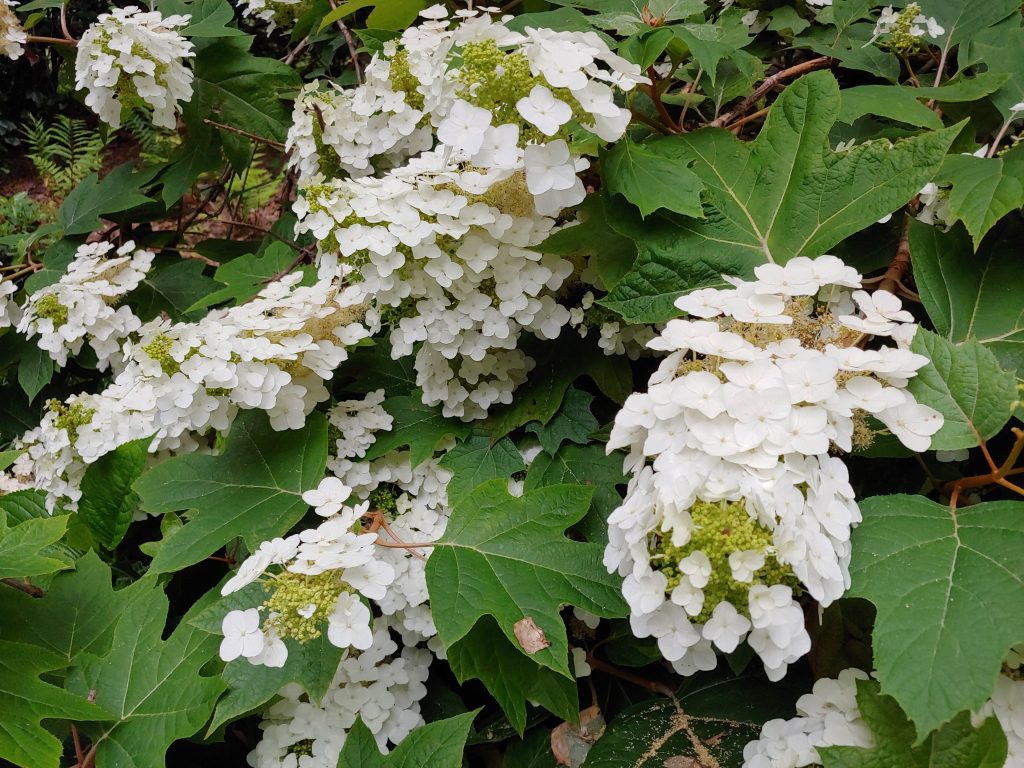
Popular, soft stemmed mophead hydrangeas (Hydrangea macrophylla) are most susceptible to winter damage, but also to early growth in mild early spring temperatures that is then damaged by freezes and frosts. The blue flowered ‘Endless Summer’, and similar hydrangeas such as ‘Penny Mac’, ‘Dear Dolores’, and ‘Nantucket Blue’ have flowered disappointingly the past few years, but all are now nearing their peak in this marvelous spring in the garden.


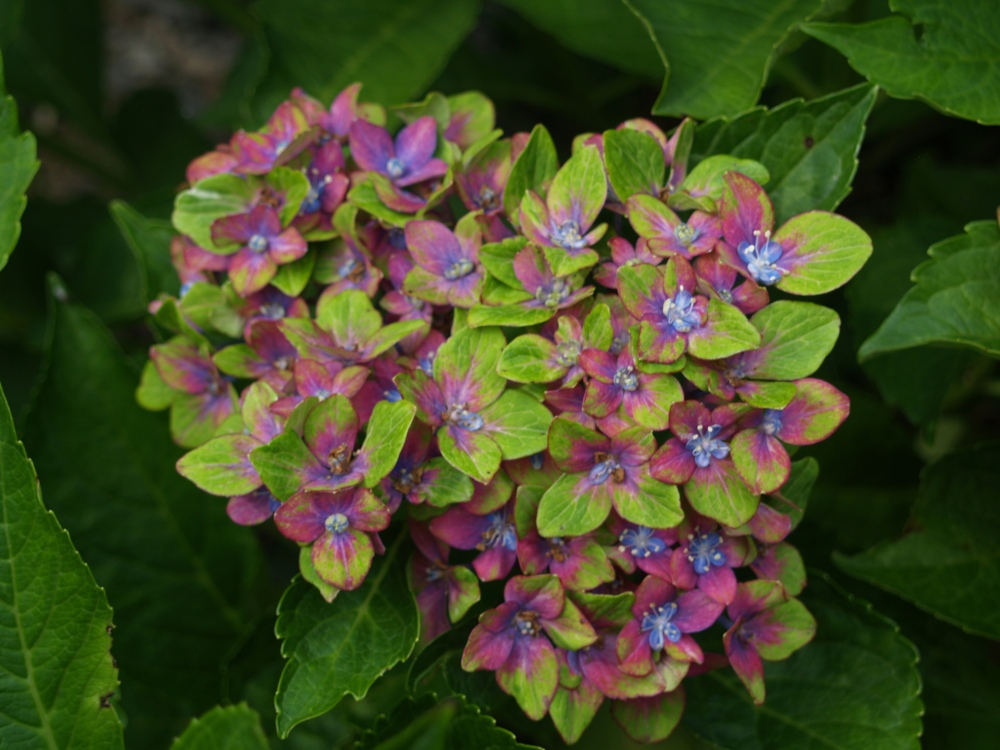

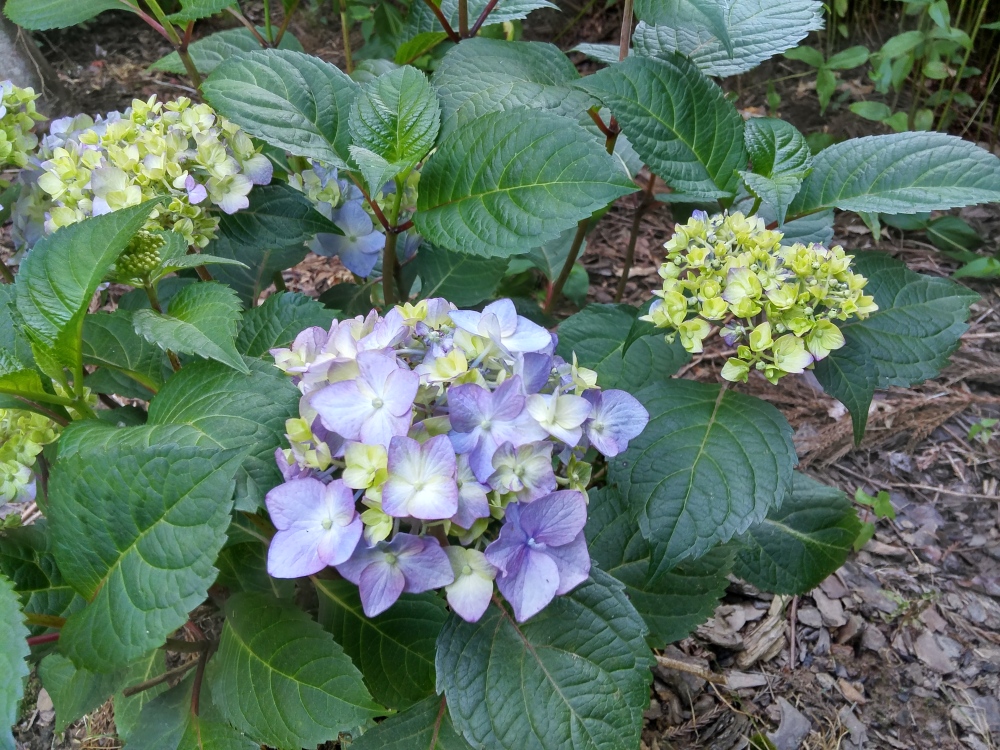
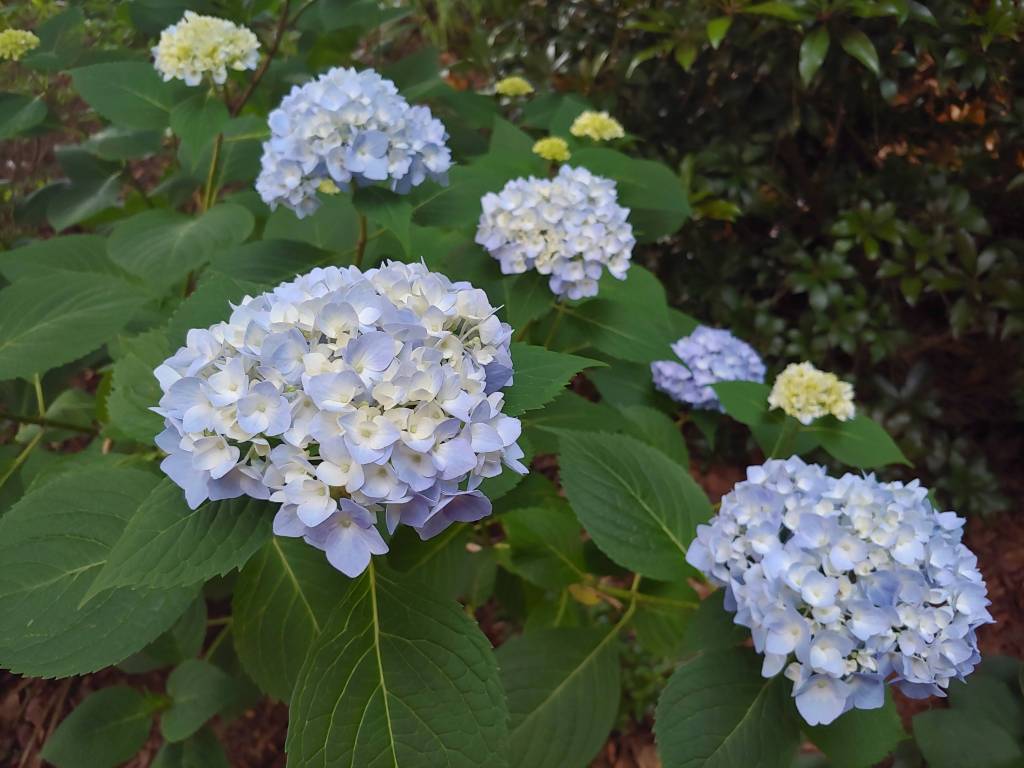
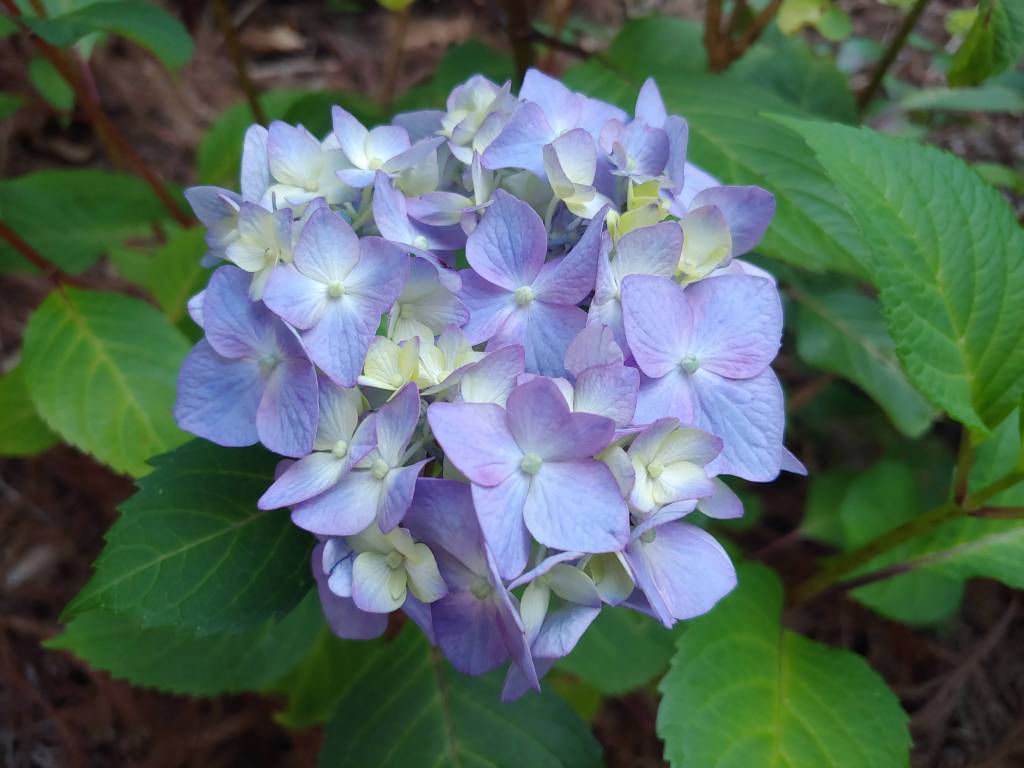
We have no idea what cultivars of hydrangeas are in our landscapes. Only a few were actually components of the original landscapes. Most were dropped off by residents of the neighborhood, and added arround the original landscapes. Some were florist types that were left after weddings in the chapel. Except for the runty florist types, they all seem to work well together. Pruning is awkward, since many do not produce many new stems. I therefore need to prune more aggressively than I should. However, the hydrangeas somehow bloom anyway.
I have a mop head hydrangea and the number of blooms have decreased for the past 2 years. As of now I have no blooms for this summer. Any thoughts or ideas?
There are a few typical problems. One, the flower buds were pruned off. Buds for the following year’s blooms, or with reblooming types for the next series of flowers, develop immediately following flowering. So, pruning weeks or months after flowering can cut off the next series of blooms. Second, variations in winter temperatures and severe freezes (usually ten degrees or below) can damage flower buds. This is usually seen as stems dying back with buds at the tips lost.
I have several hydrangeas in bloom; my favorite is the white one called Fuji Waterfall, sometimes called Shooting Star.
Fuji Waterfall is an exceptional hydrangea. The atypical form of the flowers makes you wonder why it is not mote common.
It literally stopped me in my tracks when I first saw it.